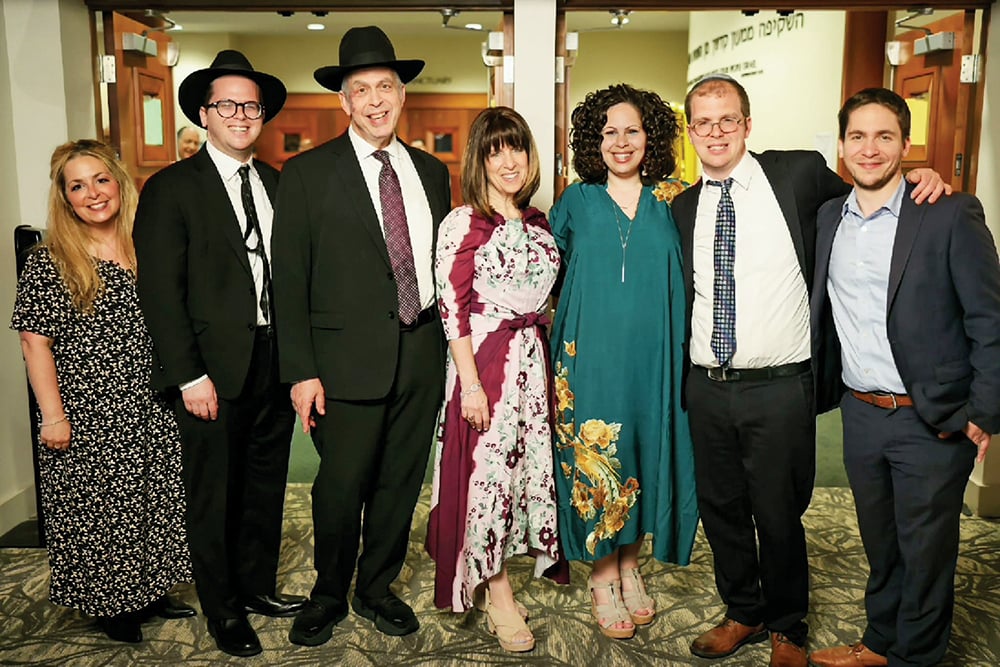
The events of October 7 traumatized many Israeli citizens, both those who experienced it directly and those who did not. Individuals and families of victims were traumatized. In order to understand the collective Israeli experience, we can draw on our own most recent experience of national trauma, which were the terrorist attacks of 9/11.
Just as people who lived through the ’60s remember where they were at the moment of the Kennedy assassination, people my age remember where they were during 9/11. I was in a colleague’s office sitting across from him when his phone rang. He picked it up and said, “OK.” I asked him, “What was that?” He said, “A plane just flew into the Twin Towers.” My first thought was that a small piper cub plane crashed into the towers. Then my colleague’s phone rang again. He picked it up, listened, and then hung up. I asked, “What was that?” He said, “Another plane just flew into the Twin Towers.” Immediately, I knew it was a terrorist attack.
The following days were a nightmare. The towers collapsed and almost 3,000 people died. It was like Pearl Harbor all over again. There was dust in the air from all the broken pipes, concrete and other materials that were used to build the towers. The dust was everywhere and moved like a cloud down many of the streets in Lower Manhattan.
Twenty-three years later, we are learning that the dust made many people deathly ill. People contracted cancers that doctors did not see before and are hard to treat. I see many of the first responders and their relatives as patients. Most of them were traumatized by 9/11 and have PTSD (post-traumatic stress disorder). PTSDis an anxiety disorder. Strong anxiety is the defining feature of the illness. People can get PTSD when they experience a traumatic situation that threatens their life or can cause serious bodily harm. Examples are war, rape, tsunamis, earthquakes or other natural disasters. PTSD was originally called “shell shock” for the soldiers who came back from war with serious symptoms of anxiety. Most soldiers who go to war do not come back with PTSD, because people exposed to the same stimulus respond differently.
After the 9/11 attack, New York City set up a fund to pay for the mental health treatment that first responders with PTSD needed. Many of the patients are evaluated at Mount Sinai hospital and then referred out to therapists with trauma experience.
One patient I see is a retired fireman who was on the job for 40 years. He was not a first responder and never experienced a single overwhelming traumatic event. Why did he get PTSD? Because many cases of PTSD are not caused by a single traumatic event. Rather, PTSD can be caused by a cumulative series of events which, when taken together create chronic stress, which can cause PTSD. An example is the chronic stress caused by living in poverty. The chronic stress that my patient faced going into burning buildings for 40 years caused him to get PTSD.
Why do soldiers get PTSD after they come home and not during war? Why did my fireman patient get PTSD when he retired and not during his 40-year career? Because sometimes when people are in a high-pressure situation, they are able to focus on what needs to be done and ignore the stress that they are undergoing. Later, when they have time to reflect on their experience, they realize that they came close to death and were terrified.
There are many symptoms characteristic of PTSD. The first is the anxiety one feels having the disorder. Repetitive nightmares are also a typical symptom. Flashbacks, where the patient re-experiences the trauma when awake, is a classic symptom. Hyper-alertness, where a person is always on guard for a possible threat, is another. Many people with PTSD do not like to be touched even by those they love, and if someone touches them without announcing themselves the patient will jump. This is called a “startle response.” Any sensory stimuli can cause the response. I once saw a patient who jumped when I touched the keys in my pocket because the metal sound reminded him of the metal sounds of war.
One man I see is in the Navy. While training for the Navy, he was completing a run in the heat outdoors, and “died” from heat exhaustion. He remembers dying and coming back to life. People who treated him said they had to restart his heart. Whatever actually happened, this experience was traumatic and he got PTSD.
When using talk therapy to help someone with PTSD, the main concern is not to re-traumatize the individual. By exploring the patient’s experiences too quickly or too deeply the patient can experience trauma again. It is important to let the patient dictate the speed at which they want to explore the trauma. This is good practice in any therapy but is especially important in trauma therapy.
You do not diagnose PTSD by the magnitude of what the person experienced. PTSD, like all diagnoses, is diagnosed by the symptoms of the patient. If two people went to war together, and only one came back with symptoms, then only that person is diagnosed with PTSD. Again, what is traumatic to one person might not be traumatic to another person.
When treating patients with PTSD it is important to be wary of “secondary trauma.” Secondary trauma is when a therapist who treats traumatized patients starts becoming traumatized himself from listening to the stories his patients share. These stories can involve rape, murder, sadism, domestic violence, child abuse. Many of these things occurred on 9/11. A therapist working with a traumatized population must make sure to have a very good support system, and should not see too many traumatized patients in a row.
Jonathan Bellin, LCSW has over 25 years experience working with a wide variety of people. He is experienced in treating individuals suffering from trauma and their family members. Jonathan maintains a tele-therapy practice where he sees adolescents through seniors, using CBT and traditional talk therapy modalities. He is accepting new patients. To reach him: [email protected].









